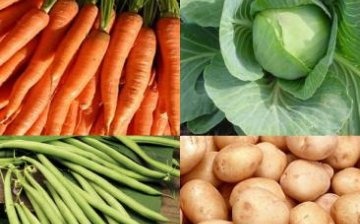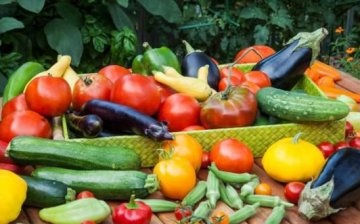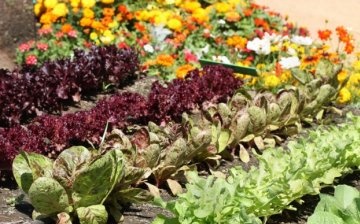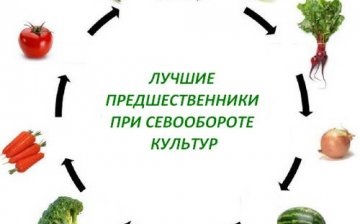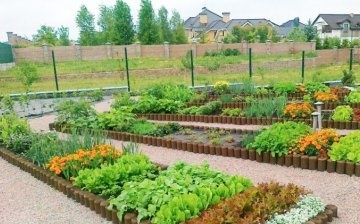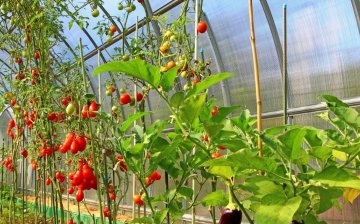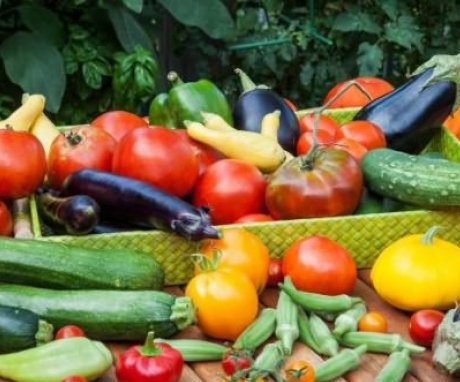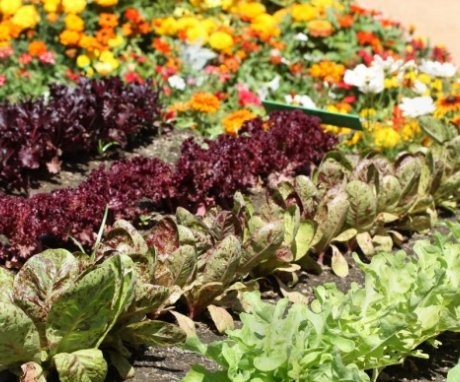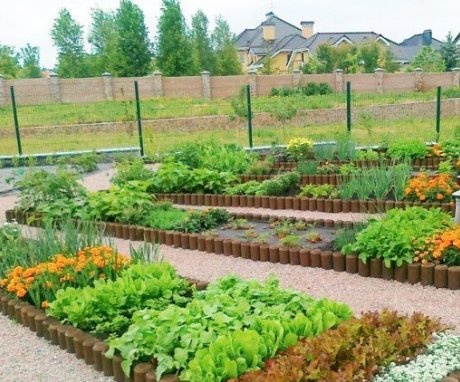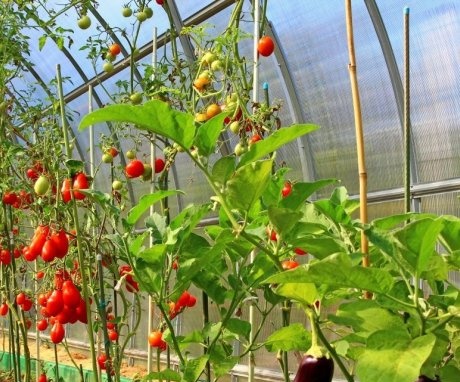How to properly organize crop rotation in the country?
Not everyone pays enough attention to following the rules. crop rotation and, accordingly, do not keep records when planning the usable land area. This often happens due to the small area. But if you correctly organize the alternation of vegetables, it will help reduce the incidence of diseases and significantly increase crop yields.
Many people often wonder why the yield is declining. There can be many reasons for this. It has been proven that certain plants require different proportions of nutrients, so the soil is unevenly depleted. Also, the roots of different crops penetrate to different depths, so the plants deplete different layers of the soil. Some species are able to enrich the soil with nitrogen compounds, for example, legumes.
Content:
- Definition and basic concepts of crop rotation
- Crop rotation rules
- The importance of crop rotation
- Correct organization of crop rotation in the garden
- Crop rotation rules in a summer cottage greenhouse
Definition and basic concepts of crop rotation
Crop rotation is called the change of vegetables in a specific area, if necessary, giving rest to the land plot, leaving it fallow. Plants can be alternated in different order. The main thing is to observe agrotechnical feasibility in each case.
When organizing crop rotation, the main goals are pursued:
- Increase soil fertility and achieve an even consumption of useful elements.
- To increase the quantitative and qualitative indicators of productivity.
- Reduce overgrowth of crops weeds and their susceptibility to diseases and harmful insects.
- Reduce negative impact soil erosion, which is observed under the influence of wind and water.
Plant rotation is a well-thought-out scheme that is expressed as a list of groups of plants and vapors in turn of planting them. Rotation in a crop rotation is the time during which crops and fallows alternate on a piece of land in a specific sequence. Crop rotations are formed from a set of links - parts that represent a combination of several types of plants and steam.
Crop rotation rules
As a result of many years of observations and experiments, four rules for the alternation of crops were established, which are subject to certain laws:
- Chemical. Plants unevenly take nutrients from the soil and assimilate them.
- Physical. The need of different vegetables for density, water and air permeability of the soil is different.
- Biological. Vegetables react differently to soil contamination and have unequal immunity to diseases and pests... If you correctly alternate crops with different biological characteristics, this will lead to a decrease in morbidity and increase the biological activity of the soil.
- Economic. To use labor resources more rationally, you need to cultivate vegetables with different planting and ripening dates.
Also, during crop rotations, it is allowed to use separate plots of land for re-planting or long-term cultivation of the same crops. But this should contribute to the yield.
The importance of crop rotation
Crop rotation is the main part of competent cultivation, which is of great importance in economic, organizational and agrotechnical understanding:
- The economic understanding implies compliance with the tasks set for obtaining a crop in order not only to satisfy all on-farm needs, but also to realize the surplus. For these purposes, rational planning of the land plot is carried out, which increases the economic basis of crop rotations.
- Under the organizational concept, it is customary to consider the competent and effective use of production capacities and working personnel to increase the volume of the crop while reducing labor and financial costs.
- Agrotechnical understanding lies in the beneficial use of the usable area and increasing the fertility of the soil.
The need for crop rotations is explained by specific motives, in the study of which measures are developed aimed at eliminating or reducing negative impacts on the quantity and quality of the crop.
Correct organization of crop rotation in the garden
Experienced gardeners actively use crop rotations to increase the productivity of small vegetable gardens. Competently alternating vegetable crops, they achieve maximum annual yields.
Possible crop rotation for the vegetable garden. Planting crops:
Mid-ripening and late-ripening cabbage
- Ideal after representatives: potato, tomato, carrot, cucumber and legumes
- Perhaps after representatives: beetroot, onion, zucchini
- Inadmissible after representatives: cabbage, radishes and radish
Red and early white cabbage
- Ideal after representatives: cucumber, potato, onion, peas and greens
- Perhaps after representatives: squash
- Unacceptable after representatives: cabbage, radishes and radishes
Beets
- Ideal after representatives: cucumber, potato, onion
- Perhaps after representatives: tomato, peas
- Inadmissible after representatives: beetroot
Cucumbers, zucchini, pumpkin
- Ideal after representatives of: legumes, peas, cabbage, perennial grasses, potato, tomato
- Perhaps after representatives: beetroot, green
- Inadmissible after representatives: cucumber, squash, pumpkin
Tomatoes, bell peppers, eggplants, potatoes
- Ideal after representatives: early white cabbage and cauliflower, legumes, greens
- Perhaps after representatives: cucumber, beetroot and radish
- Inadmissible after representatives: tomato, peppers, eggplant, potato
Onions and garlic
- Ideal after representatives: cucumber, potato, legumes and green manures
- Perhaps after representatives: cabbage, beetroot, tomato
- Inadmissible after representatives: tomato, carrot, onion and garlic
Legumes and peas
- Ideal after representatives: cabbage, potato, cucumber and strawberry
- Perhaps after representatives: tomato and greenery
- Unacceptable after representatives: perennial grasses, legumes and peas
Cauliflower and cabbage salads
- Ideal after representatives: potato, tomato, cucumber
- Possibly after representatives: greens and legumes
- Unacceptable after representatives: cabbage, radishes, radishes
Herbs and spices
- Ideal after representatives: cabbage and cucumber
- Perhaps after representatives: potato, tomato, legumes, onions
- Unacceptable after representatives: carrot and parsnips
When organizing crop rotations, it is not worth cultivating plants on the site that need a large amount of nutrients. They should be alternated with less whimsical vegetables:
- Lots of nutrients needed potatoes, cabbage, pumpkin, spinach, rhubarb, celery, asparagus and zucchini.
- Less fertilizer required for growing: eggplant, cucumbers, horseradish, melons, radish, beets, curly legumes and tomato.
- Very few elements are consumed by bush beans, peas, salads, radish, onions, greens and spicy herbs.
With competent crop rotations, it is necessary to plant all groups of crops one by one, and then fully fertilize the soil. It is also necessary to be guided by the basic rule - the activity of plant development is directly dependent on the balance of trace elements after last year's crops. When planning ahead, you need to remember that vegetables that are part of the same family will not be planted in their place earlier than a four-year period.
The larger the interval, the better the harvest.
With a small plot of land, many summer residents are forced to cultivate some crops in a permanent place. This often applies to potatoes, which occupy the lion's share of all the beds.
Crop rotation rules in a summer cottage greenhouse
Often, farmers use greenhouses to obtain crops all year round, it is not easy to organize the correct alternation of crops in which due to the limited space. Today, among summer residents, two options for organizing a greenhouse crop rotation for 4 years are common.
Option number 1
- First year - What culture to plant: cucumber, squash, cabbage. Fertilizers: rotted manure.
- Second year - What culture to plant: tomato, peppers, eggplants, radishes, onions, garlic, green. Fertilizers: half the norm organic dressings.
- Year Three - What kind of crop to plant: carrot, beets, radishes, rutabagas, parsley. Fertilizers: mineral dressing.
- Fourth year - What culture to plant: potatoes... Fertilizers: complex fertilizing
Option number 2
- First year - What culture to plant: potato... Fertilizers: organic.
- Second year - Which crop to plant: legumes and peas. Fertilizers: organic matter in a half dose and the organization of soil liming.
- The third year - What culture to plant: radishes, salads, tomatoes, zucchini, cucumber. Fertilizers: mulch the soil with compost.
- Fourth year - What culture to plant: beets, carrot, parsnip, rutabagas. Fertilizers: spring planting siderates.
It is possible to heal greenhouse soil by alternating greenhouse crops: in the first year - rye, in the second - mustard, and in the third - legumes (or phacelia). Each plant in its own way will improve the structure of the soil and heal it, enriching it with nutrients.
Using the rules of crop rotation, the summer resident gets the opportunity to competently plan his land allotment and get a high-quality annual harvest. But in order not to get confused and do everything right, you should keep records of the landing sites of certain crops.
More information can be found in the video:



